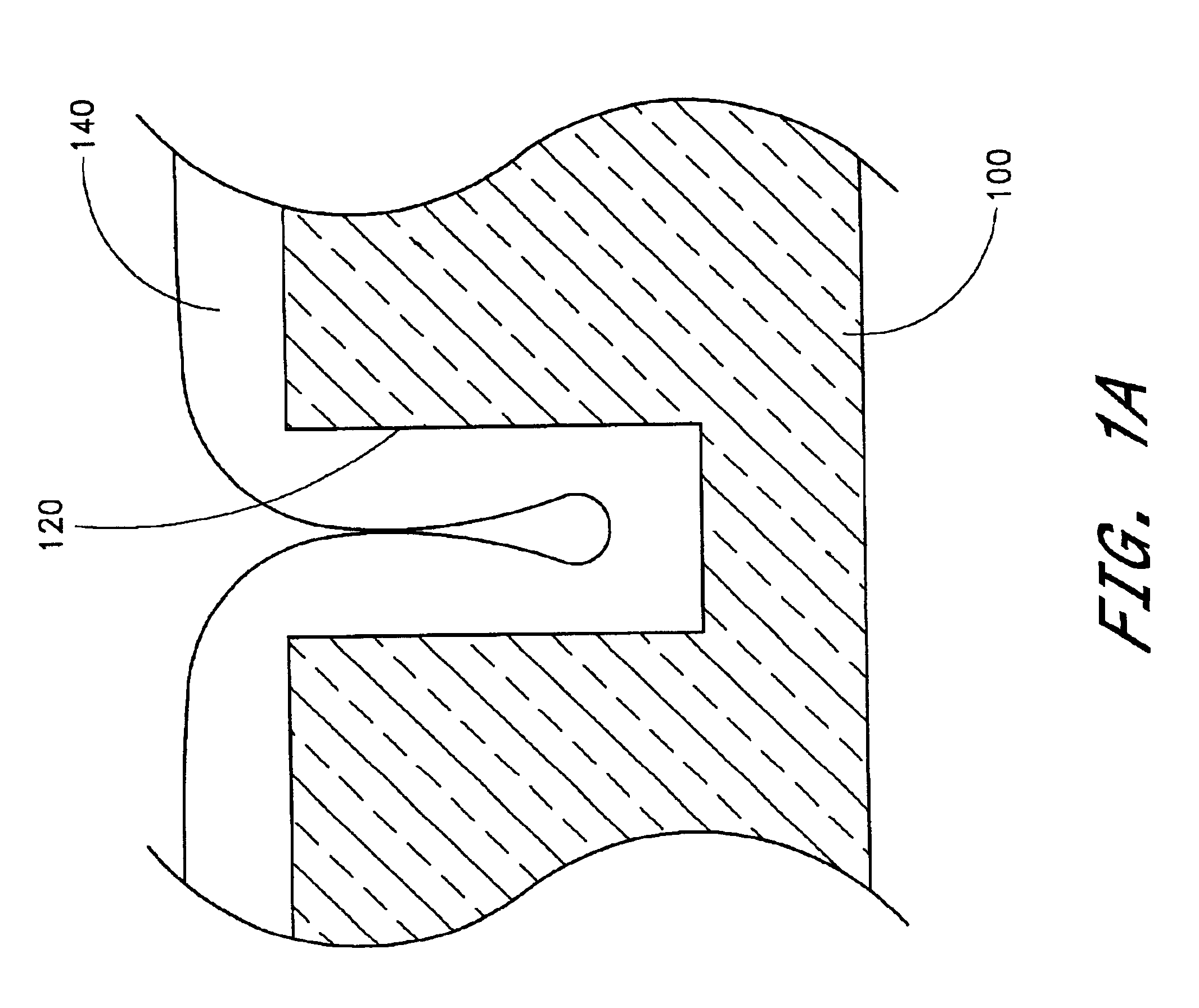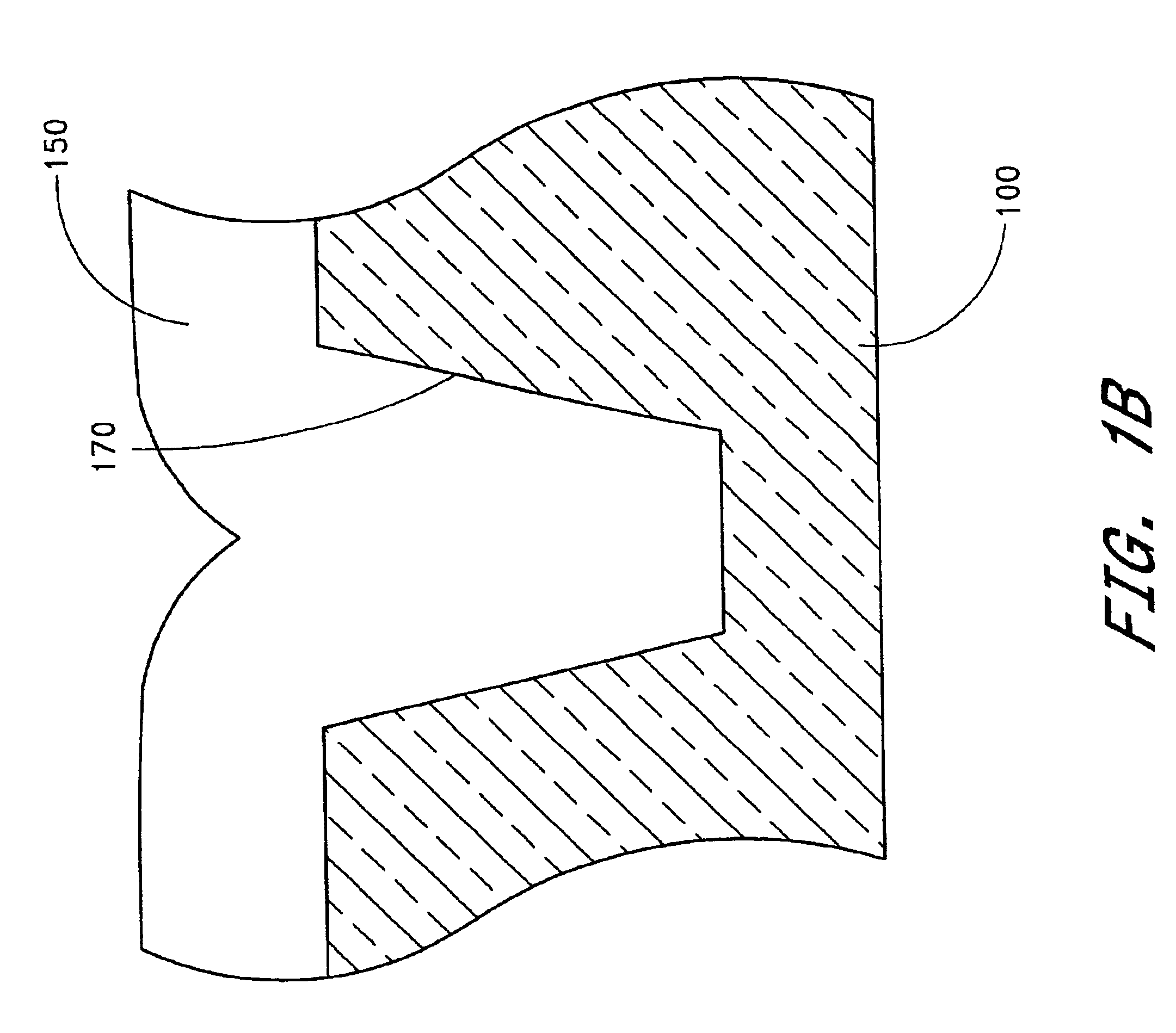Method of fabricating trench isolation structures for integrated circuits using atomic layer deposition
a technology of atomic layer deposition and trench isolation, applied in the direction of semiconductor/solid-state device manufacturing, basic electric elements, electric devices, etc., can solve the problems of locos isolation, reducing resolution, and increasing difficulty in device isolation, which is critical to proper circuit operation
- Summary
- Abstract
- Description
- Claims
- Application Information
AI Technical Summary
Benefits of technology
Problems solved by technology
Method used
Image
Examples
Embodiment Construction
of deposition.
[0026]FIG. 8 is a schematic cross-section of a partially fabricated integrated circuit, illustrating a filled trench.
[0027]FIG. 9 is a schematic cross-section of a partially fabricated integrated circuit, illustrating the filled trench of FIG. 8 after planarization.
[0028]FIG. 10 is an equilibrium phase diagram for silicon oxide (silica) and aluminum oxide (alumina).
[0029]FIG. 11 is a plot of coefficient of thermal expansion as a function of weight percent Al2O3 in an Al2O3 / SiO2 mixture.
DETAILED DESCRIPTION OF THE PREFERRED EMBODIMENT
[0030]Although described in the context of trench isolation structures in integrated circuits, the skilled artisan will readily find application for the principles disclosed herein in a number of other contexts. The processes and structures of the preferred embodiments have particular utility where extremely thin layers are desired, particularly within openings that are narrow and deep.
[0031]As noted in the Background section above, the tre...
PUM
| Property | Measurement | Unit |
|---|---|---|
| pressure | aaaaa | aaaaa |
| pressure | aaaaa | aaaaa |
| pressure | aaaaa | aaaaa |
Abstract
Description
Claims
Application Information
 Login to View More
Login to View More - R&D
- Intellectual Property
- Life Sciences
- Materials
- Tech Scout
- Unparalleled Data Quality
- Higher Quality Content
- 60% Fewer Hallucinations
Browse by: Latest US Patents, China's latest patents, Technical Efficacy Thesaurus, Application Domain, Technology Topic, Popular Technical Reports.
© 2025 PatSnap. All rights reserved.Legal|Privacy policy|Modern Slavery Act Transparency Statement|Sitemap|About US| Contact US: help@patsnap.com



